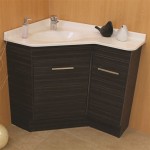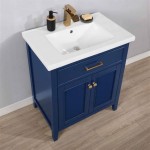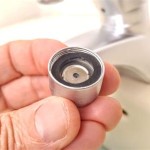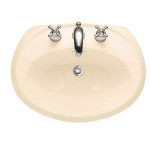How to Replace a Washer in a Bathroom Sink Drain
A leaky bathroom sink can be a frustrating and inconvenient problem. One common cause of leaks is a worn-out washer in the drain assembly. The washer acts as a seal to prevent water from escaping around the drain stopper. Over time, the washer can become brittle, cracked, or distorted, leading to leaks. Fortunately, replacing a washer is a relatively simple DIY project that can be completed with basic tools and a few minutes of your time.
1. Identifying the Washer
The washer is typically located within the drain stopper assembly. It’s a small, flat, rubber or plastic disc that fits on the underside of the stopper. Depending on the drain assembly design, you may need to remove other parts to access the washer. Common drain assembly types include:
- Lift rod drain stopper: These have a vertical rod connected to the stopper, allowing you to push it down to close the drain. The washer is typically found underneath the stopper, secured by a nut.
- Pop-up drain stopper: This type uses a spring-loaded mechanism to open and close the drain. The washer is usually located below the stopper, embedded within the drain assembly.
- Push-button drain stopper: These are typically found in modern bathroom sinks and use a push button to control the drain. Depending on the model, the washer may be located underneath the button or within the drain assembly itself.
2. Gathering the Necessary Tools and Materials
Before you begin, gather the following tools and materials:
- Adjustable wrench
- Channel-lock pliers
- Phillips screwdriver
- New washer (compatible with your drain assembly)
- Bucket
- Towel
- Gloves (optional)
You can find replacement washers at most hardware stores or online retailers. Be sure to purchase a washer that is compatible with your drain assembly. Most drain stoppers will have markings indicating the size and type of washer they require.
3. Disassembling the Drain Assembly
Now, follow these steps to replace the washer:
- Turn off the water supply to the sink. Locate the shut-off valve beneath the sink and turn it clockwise to the closed position.
- Place a bucket beneath the sink to catch any remaining water in the drainpipe.
- Remove the drain stopper. For lift rod stoppers, simply lift the rod to remove the stopper. For pop-up stoppers, press the button to open the drain, and gently pull the stopper upward. For push-button stoppers, you may need to pry the button off or unscrew it.
- Loosen and remove the nut that secures the washer. Use an adjustable wrench or channel-lock pliers to loosen the nut. Once loose, you can remove it entirely.
- Inspect the washer. If the washer is cracked, brittle, or distorted, it needs to be replaced.
- Remove the old washer. Carefully remove the old washer from the drain assembly.
- Install the new washer. Place the new washer on the drain assembly, making sure it sits flush with the surface.
- Reassemble the drain assembly. Reinstall the nut, tightening it securely but not overtightening. Replace the drain stopper.
- Turn the water supply back on. Open the shut-off valve slowly to allow water to flow back into the drainpipe.
- Check for leaks. Once the water is flowing, carefully inspect the connection around the drain stopper for any signs of leaks.
If you notice any leaks, tighten the nut further or repeat the steps to ensure a proper seal.
How To Install Bathroom Sink Drain Queen Bee Of Honey Dos

Leaking Tap Learn How To Change A Washer

How To Replace A Sink Stopper Quick And Simple Home Repair
How To Install Bathroom Sink Drain Queen Bee Of Honey Dos

How To Fix Or Replace A Leaky Sink Trap Hometips

Learn The 7 Diy Steps To Replace Your Tap Washer Blog

Installing A New Bathroom Sink
How To Install Bathroom Sink Drain Queen Bee Of Honey Dos

How To Change A Washer On Mixer Tap Living By Homeserve

Installing A New Bathroom Sink
Related Posts







